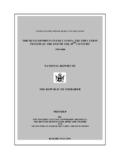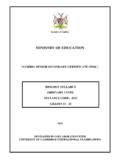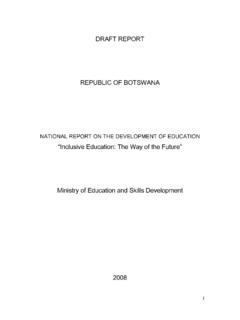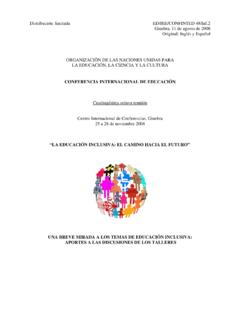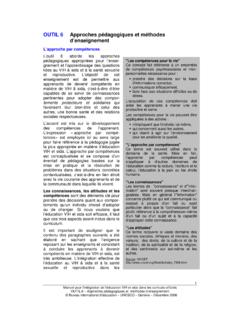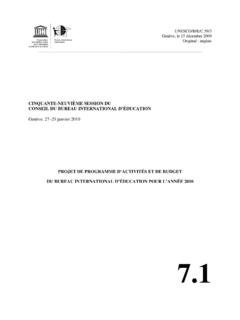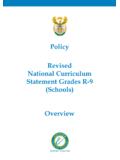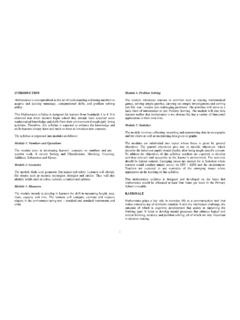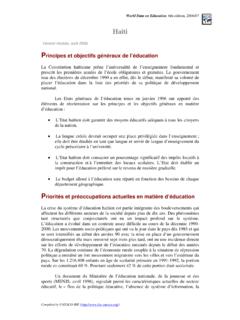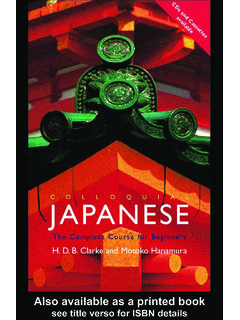Transcription of Teaching reading - International Bureau of Education
1 International ACADEMYOF EDUCATIONINTERNATIONAL BUREAUOF EDUCATIONT eachingreadingBy Elizabeth S. Pang,Angaluki Muaka,Elizabeth B. Bernhardtand Michael L. KamilEDUCATIONAL PRACTICES SERIES 12 The International Academyof Education IAEThe International Academy of Education (IAE) is a not-for-profitscientific association that promotes educational research, itsdissemination, and the implementation of its in 1986, the Academy is dedicated to strengtheningthe contributions of research, solving critical educationalproblems throughout the world, and providing better commu-nication among policy-makers, researchers and seat of the Academy is at the Royal Academy of Science,Literature and Arts in Brussels, Belgium, and its co-ordinatingcentre is at Curtin University of Technology in Perth, general aim of the IAE is to foster scholarly excellencein all fields of Education .
2 Towards this end, the Academy provides timely syntheses of research-based evidence of inter-national importance. The Academy also provides critiques ofresearch, its evidentiary basis, and its application to current members of the Board of Directors of theAcademy are: Erik De Corte, University of Leuven, Belgium (President) Herbert Walberg, University of Illinois at Chicago, UnitedStates of America (Vice President) Barry Fraser, Curtin University of Technology, Australia(Executive Director) Jacques Hallak, Paris, France Michael Kirst, Stanford University, United States ofAmerica Ulrich Teichler, University of Kassel, Germany Margaret Wang, Temple University, United States prefaceThis booklet is about reading development and instruction.
3 It has beenprepared for inclusion in the Educational Practices Series developed bythe International Academy of Education and distributed by theInternational Bureau of Education and the Academy. As part of itsmission, the Academy provides timely syntheses of research oneducational topics of International importance. This booklet is the twelfthin the series on educational practices that generally improve authors are distinguished scholars:Elizabeth S. Pang was an educator and curriculum planner at theMinistry of Education in Singapore. She has carried out extensiveresearch on bilingual students. Currently completing her doctoral degreein Educational Linguistics at Stanford University, her research examinesthe cross-linguistic transfer of reading skills in biliterate Chinese Muaka is a native of Kenya and has taught Arabic at theUniversity of Nairobi.
4 At Stanford University, he teaches Swahili andco-ordinates the African Evening Forum. Muaka holds a in ArabicLiterature from the University of California, Los Angeles. He haspublished a novel in B. Bernhardt is Director of the Language Centre andProfessor of german Studies at Stanford University. Her book, Readingdevelopment in a second language, won the modern LanguageAssociation s Mildenberger Prize as an exceptional contribution toforeign-language research as well as the Edward Fry Award from theNational reading Conference as an outstanding contribution to L. Kamil is a professor at Stanford University. He was amember of the National reading Panel, synthesizing instructionalresearch in reading .
5 He is also an editor of the Handbooks of readingresearch, Volumes I, II and III. His current research examines the effectsof computer technology on officers of the International Academy of Education are awarethat this booklet is based on research carried out primarily ineconomically advanced countries. The booklet, however, focuses onaspects of reading and instruction that are universal. The practicespresented here are likely to be generally applicable throughout theworld. Indeed, they might be especially useful in countries that arecurrently less developed economically. Even so, the principles shouldbe assessed with reference to local conditions, and adapted any educational setting or cultural context, suggestions or guidelinesfor practice require sensitive and sensible application, and continuingevaluation.
6 HERBERT J. WALBERGE ditor, IAE Educational Practices SeriesUniversity of Illinois at Chicago3 Previous titles in the Educational practices series :1. Teaching , by Jere Brophy. 36 Parents and learning,by Sam Redding. 36 educational practices,by Herbert J. Walberg andSusan J. Paik. 24 student achievement in mathematics,by DouglasA. Grouws and Kristin J. Cebulla. 48 Tutoring, by Keith Topping. 36 Teaching additional languages, by Elliot L. Judd, Lihua Tanand Herbert J. Walberg. 24 How children learn,by Stella Vosniadou. 32 Preventing behaviour problems: what works, by Sharon , Patricia Brennan, Anthony Biglan, Linna Wang andSuad al-Ghaith. 30 Preventing HIV/AIDS in schools, by Inon I.
7 Schenker andJenny M. Nyirenda. 32 Motivation to learn, by Monique Boekaerts. 28 and social emotional learning, by Maurice J. titles can be downloaded from the websites of the IEA( ) or of the IBE( )or paper copies can be requested from: IBE, Publications Unit, 199, 1211 Geneva 20, of contentsIntroduction, page 61. Oral language, page 82. Phonological and phonemic awareness, page 93. Fluency, page 114. Vocabulary, page 125. Prior knowledge, page 136. Comprehension, page 147. Motivation and purpose, page 158. Integrated reading and writing, page 169. Texts, page 1710. Assessment, page 1811. Cultural factors, page 1912. Practice, page 20 Conclusion, page 21 References, page 225 This publication has been produced in 2003 by the InternationalAcademy of Education (IAE), Palais des Acad mies, 1, rue Ducale,1000 Brussels, Belgium, and the International Bureau of Education (IBE), Box 199, 1211 Geneva 20, Switzerland.
8 It is availablefree of charge and may be freely reproduced and translated into otherlanguages. Please send a copy of any publication that reproducesthis text in whole or in part to the IAE and the IBE. This publicationis also available on the Internet. See the Publications section, Educational Practices Series page at: authors are responsible for the choice and presentation of thefacts contained in this publication and for the opinions expressedtherein, which are not necessarily those of UNESCO/IBE and do notcommit the organization. The designations employed and the presen-tation of the material in this publication do not imply the expressionof any opinion whatsoever on the part of UNESCO/IBE concerningthe legal status of any country, territory, city or area, or of its autho-rities, or concerning the delimitation of its frontiers or in France by SADAG, is reading ?
9 reading is about understanding written is a complex activity that involves both perception andthought. reading consists of two related processes: wordrecognition and comprehension. Word recognition refers to theprocess of perceiving how written symbols correspond to one sspoken language. Comprehension is the process of makingsense of words, sentences and connected text. Readers typicallymake use of background knowledge, vocabulary, grammaticalknowledge, experience with text and other strategies to helpthem understand written text. Much of what we know about reading is based on studiesconducted in English and other alphabetic languages. Theprinciples we list in this booklet are derived from them, butmost also apply to non-alphabetic languages.
10 They will haveto be modified to account for the specific to read is an important educational goal. For bothchildren and adults, the ability to read opens up new worldsand opportunities. It enables us to gain new knowledge, enjoyliterature, and do everyday things that are part and parcel ofmodern life, such as, reading the newspapers, job listings,instruction manuals, maps and so on. Most people learn to readin their native language without difficulty. Many, but not all,learn to read as children. Some children and adults needadditional help. Yet others learn to read a second, third oradditional language, with or without having learned to read intheir first language. reading instruction needs to take intoaccount different types of learners and their needs.
